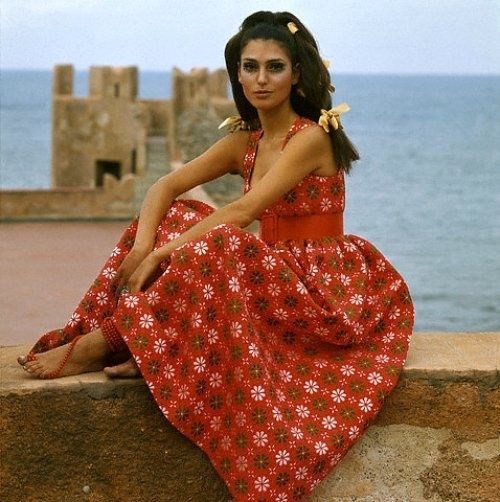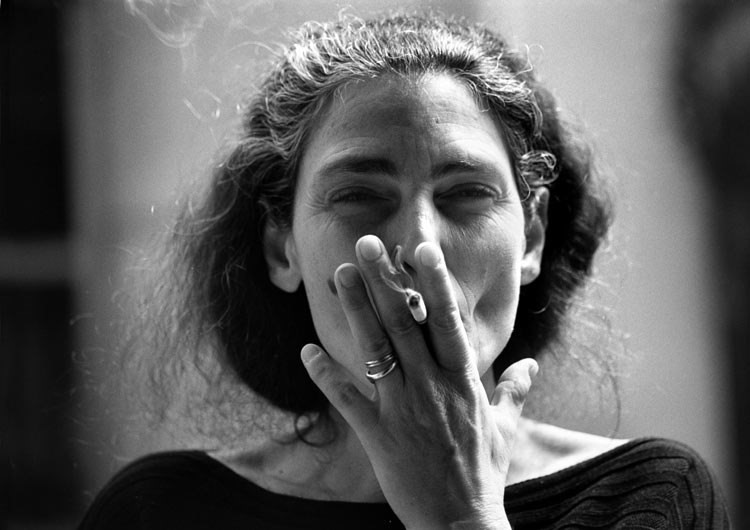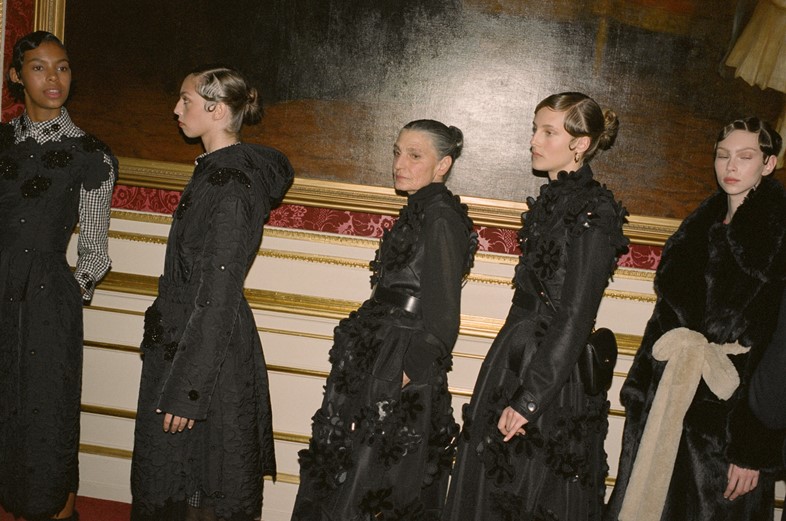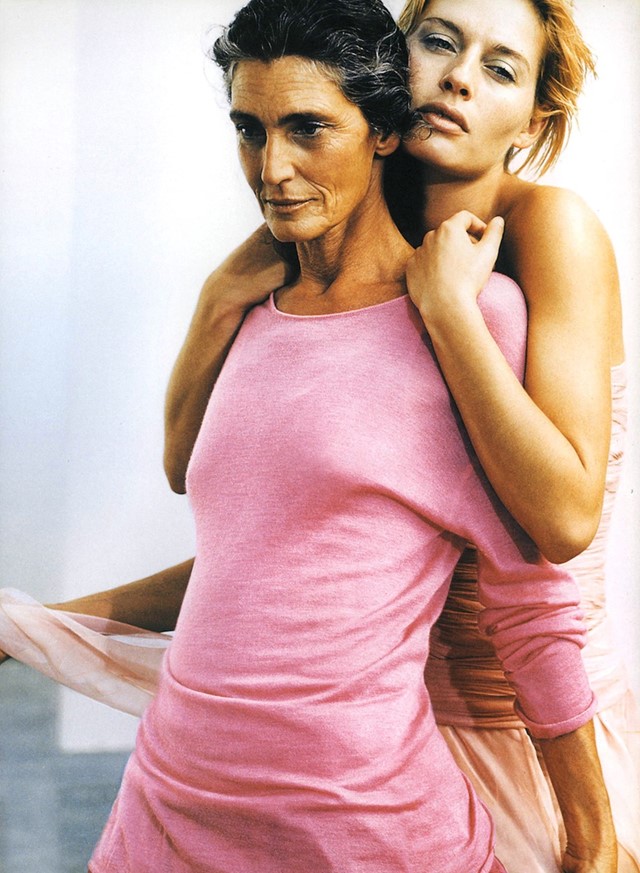Benedetta Barzini’s modelling career is fascinating, and it may be the least interesting thing about the 73-year-old catwalk star
Heiress, feminist, actress, Marxist, teacher and iconic model Benedetta Barzini has enjoyed a phenomenal career. From her big break posing for Irving Penn in the 60s, to starring in Simone Rocha’s A/W17 show just this year, her professional life has maintained fascinating and multifarious momentum. In fact, Barzini’s professional longevity may offer a perfect metaphor for her personal endurance and strength of character: the 73-year-old has talked openly about her numerous treacherous relationships, from that with her family, to anorexia, her father’s right-wing politics, love affairs and being left to raise newborn twins as a single mother. As her beauty has matured she has unfurled into an inspiring, strong and resilient woman, while her attitude to beauty and mental health reveal her steely constitution – as the following twists and turns of her life attest.

Defining Features
Barzini, with her piles of brunette hair, huge dark eyes and distinctive mole in the centre of her right cheek, caught the eye of Italian Vogue editor Consuelo O’Connell Crespi in 1963. Her first shoot was soon spotted by US Vogue’s then-managing editor Diana Vreeland, who sent a note to Barzini inviting her out to New York for a few days to shoot with Irving Penn for the magazine. Barzini stayed for five years. Working relentlessly with Penn and other photographers like Richard Avedon and Henry Clarke, by 1966 Harper’s Bazaar named her one of the “100 Great Beauties of the World”.
Her personal style was far more low-key than the overblown glamour of her pictures. She opted for clean lines: crew-neck knits, woollen shifts, plain jumpsuits, her hair drawn back into a low ponytail, a bare face. Her aesthetic eschewed the gloss of her Manhattan-ite counterparts and her aristocratic upbringing, and such a penchant for simplicity belied the first signs of her Marxist leanings. “Nobody’s life is better simply because one is ‘beautiful’,” Barzini once exclaimed. “Beauty is not visible. It is written in charm, humour, authenticity. Nobody is responsible for their looks. We are all responsible for what we do with our body and mind. I never cared about looks. I never walked around looking like a model. On go-sees they would look at my book and say ‘Is that you?!’ I didn’t look like those pictures.” It was no doubt her refreshing originality of thought that drew her into Andy Warhol’s fold and garnered her a great friend in the artists Salvador Dalí and Jasper Johns. Even when in a zebra print evening dress at a party at The Factory (she described Warhol as wanting “to see the children of the High Class Bourgeoisie of New York roll around like cockroaches inside the abyss”), her hair and make-up were purposefully pared back.
Today, her look is just as spare and nonchalantly chic. The model is frequently papped on her bicycle outside venues at show season, her bare brown arms exposed bar piles of silver jewellery, her tresses of streaked silver hair loose and flowing, a cigarette always clamped between her teeth. There is a freshness and confidence to her look that defies all preconceived notions of age and beauty.

Seminal Moments
Born in Grosseto in 1943 to political journalist Luigi Barzini, Jr and Giannalisa Feltrinelli, heiress to the Feltrinelli family fortune, Barzini was sent alone to New York to study at just seven years old, where she stayed for five years. It was here that her ongoing struggle with an eating disorder began, before she returned to Europe and oscillated between Swiss private schools and mental institutions – one of which she eventually escaped. “My sickness came from the fact that everyone that I had ever loved could not last,” Barzini has explained. “All my governesses (once I counted 17 of them) were constantly fired. The people who belonged to my so-called family did not exist. I was a very unwanted child. I consider my anorexia as the beginning of coming to sanity because it’s insane not to be sick if you have a really broken-up life. […] there is a very ancient link between anorexia and family dynamics. Refusing to eat is one of the very few things that women in the past could do to go against the will of their families.” And so began her concerns with patriarchy and power.
It was back in New York, while training at the Actor’s Studio, that Barzini met post-Beat poet, filmmaker and Warhol apostle Gerard Malanga, to whom she would become engaged (though never married). Malanga dedicated numerous works of poetry to his muse Barzini: 3 Poems for Benedetta Barzini and The Last Benedetta Poems. By 1969, Barzini had moved back to Italy to act, and though she only appeared in a few, fairly unknown films, it was here that she fell in love with film director Roberto Faenza and married him. On the night she gave birth to their twins, Faenza walked out on Barzini, leaving her to raise her children communally with two female students and a male professor. Now she teaches a course in feminism at the University of Milan, is a member of the militant feminist group Unione Donne Italiane, and has helped raise awareness of the problems facing working class women in Italy, much to her father (a leading figure in the right-of-center Liberal party)’s chagrin. She also spends two days a week volunteering at the local hospital, helping expectant mothers.

She’s an AnOther Woman Because…
At 73 years old Barzini’s style and attitude continues to inspire to this day – bringing a joyful diversity to the ad campaigns of GAP and Burberry as well as the catwalks of Simone Rocha, Daniela Gregis and her friend Antonio Marras. All of which she offsets with a healthy dose of suspicion of the profession: “I never really thought about being beautiful: I considered myself a sort of coathanger on which others (the ordeal in the fashion business) could place their own talents. Now I am more inclined to see beauty as a cop-out, a way of ignoring substance and commitment, a game to play with or against others.” Her enduring style, character and charisma are a poignant reminder of the gifts of age and maturity. As Barzini herself extols: “Life takes us far away from youth and running after one’s looks when young is ridiculous. Maturity is much more fascinating.”
